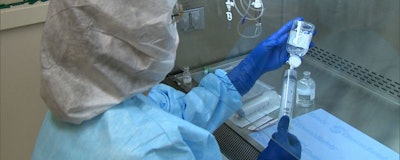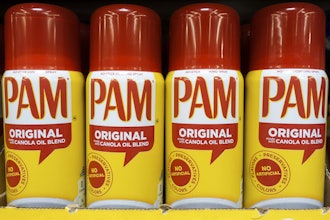
Don't risk devastating effects from a chemical accident. Proper planning could save countless lives and lost work hours. Check out these 10 safety tips for the chemical industry to see if your company's chemical hygiene plan requires changes or additions.
1. Offer Training and Resources. Don't assume employees know what to do to prevent or respond to chemical spills. Train all incoming employees thoroughly on standard operating procedures (SOPs), covering a variety of chemicals. Post information in any area with chemicals to supplement the SOPs. This helps in instances when the chemicals require specific handling instructions.
Educate employees on the four ways they may be exposed to chemicals. Teach them how to use safety equipment and proper procedures to avoid inhalation, ingestion, injection, and absorption.
2. Label Everything Clearly. Potentially save a life by properly labeling all chemical containers. Chemicals often look alike, even to an expert. Check container labeling—everyone should easily see chemical hazards on the exterior of the container. Correctly labeled containers will prevent accidents due to mixing incorrect substances or improper disposal.
Locate material safety data sheets (MSDS) in an easily accessible and clearly labeled location. Prior to working with any chemical, a worker should consult the appropriate MSDS. These sheets give information on hazards and safety procedures for the safe handling of the material.
3. Location, Location, Location. Regularly assess the location of all chemicals. Verify that containers of chemicals do not sit near other chemicals they could adversely react with. Also, allow for appropriate ventilation and drainage in the event of a container breach. Good ventilation in both the storeroom and workspace can ensure the air quality in both places. Exhaust vents in a work area might be required depending on the chemicals used.
4. Safety Check Emergency Equipment. The Occupational Safety and Health Administration (OSHA) guidelines require emergency equipment to be on hand and functioning in buildings that store or handle chemicals. An emergency eyewash could prevent blindness in employees who get chemicals in their eyes. A working and recently inspected fire extinguisher stops small fires from becoming larger. On-site firefighters may require firefighting equipment, such as water sources and hoses.
5. Cleanliness is Next to Safety. Keep workstations clean and organized to prevent accidents. Wet floors promote falls. Cluttered work areas encourage inadvertent spills or mixing. To reduce clutter, keep excess chemicals in their original containers until needed. Give workers a disposal area near their workstations to safely get rid of used chemicals.
Workers must also have access to a place to leave work clothes at the facility. Washing machines at work prevent workers from taking home potentially contaminated clothes for cleaning. Instruct workers to always change clothes before leaving to prevent possibly exposing their families to chemicals from the facility.
6. Keep Safety Gear in Sight. To keep employees away from chemical exposure, safety gear needs to be worn when in the area. Teach all employees about the location of goggles, respirators, and gloves. Encourage workers to use the equipment every time they enter a workspace. Exposure to chemicals can occur when safety gear is neglected. Making it easier to access safety equipment will ensure workers use it.
Train all workers to inspect their safety equipment closely. Discard any pieces with signs of excessive wear or damage. Compromised equipment puts safety at risk.
7. Designate a Location for Food and Drink. Forbid eating and drinking around the work area to prevent workers from accidentally ingesting chemicals. Create a specific location far from the chemical storage and worksite for eating, drinking, and breaks. Near this spot, give employees ready access to sinks and soap for handwashing before eating or drinking. This washes off any possible chemical residue from the hands and can prevent accidental ingestion. Prohibiting any food or drinks near the work area is the easiest way to prevent contamination of either the chemicals or the food.
8. Create a Chain of Responsibility. Have a clearly outlined chain of command to respond in the event of an emergency. Employees at each level of responsibility should work each shift. Teach each worker whom they should report to if an accident occurs. This requires planning to avoid a situation in which the appropriate supervisors don't show up to work. Have a list of alternates as substitutes should someone fall sick.
9. Give New Employees a Language Course. Too often, the jargon used by employees around chemicals may seem like a foreign language to new hires or transfers. Confusion and mistakes happen when workers cannot understand each other.
A quick course in the words used in the work area can prevent disasters with a simple language lesson. For example, an employee who never heard the term "black Betsy" for a boiler may become confused and misinterpret a direction. Learn all the jargon used by employees and pass this information to new hires to avoid communication errors.
10. Practice, Practice, Practice. Practice safety procedures for emergencies. Fire drills and chemical spill drills will keep the skills employees learned during training finely honed. When an emergency does arise, the employees will know their roles and functions to mitigate harm to themselves and the building.
It is not realistic to expect companies to prevent all emergencies and accidents. Aside from prevention, a chemical hygiene plan must include information on responding to emergencies. This two-layered procedure can reduce problems and consequences if an accident does occur. Don't delay in amending the company's safety plan. Lives could depend on it.
Bio:
Megan Ray Nichols is a STEM writer & blogger
(Sources: 11 Rules For Safe Handling Of Hazardous Materials, Guide To Caustic Soda, Safety And Health Guide For The Chemical Industry, Chemical Safety Tips)






















